En route to the National Museum of Mexican Art on Saturday, I passed through the 18th Street Station of the CTA’s Pink Line. A number of El stations feature public art, but 18th Street, which serves the Pilsen neighborhood, is lavishly decked out.
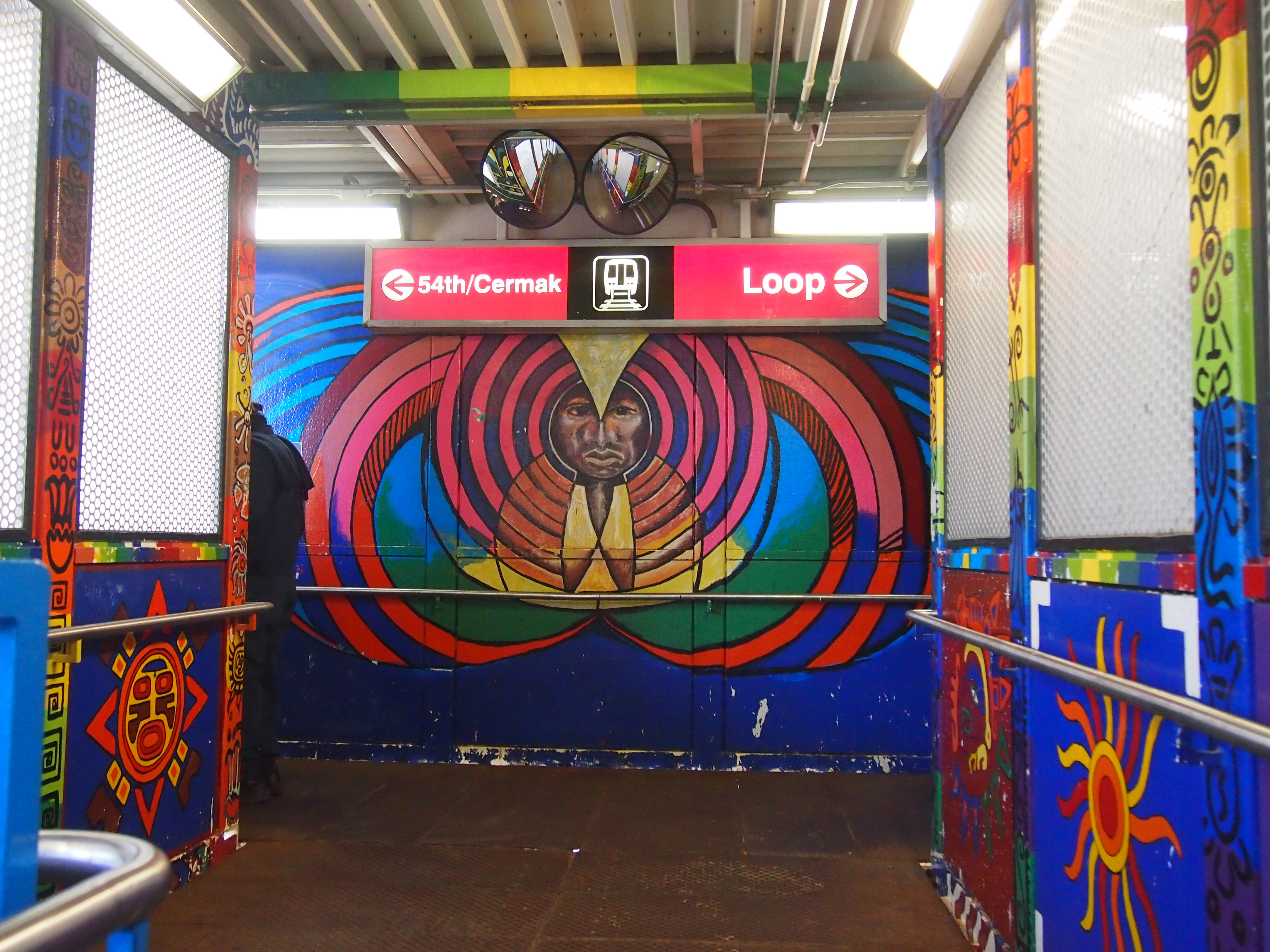
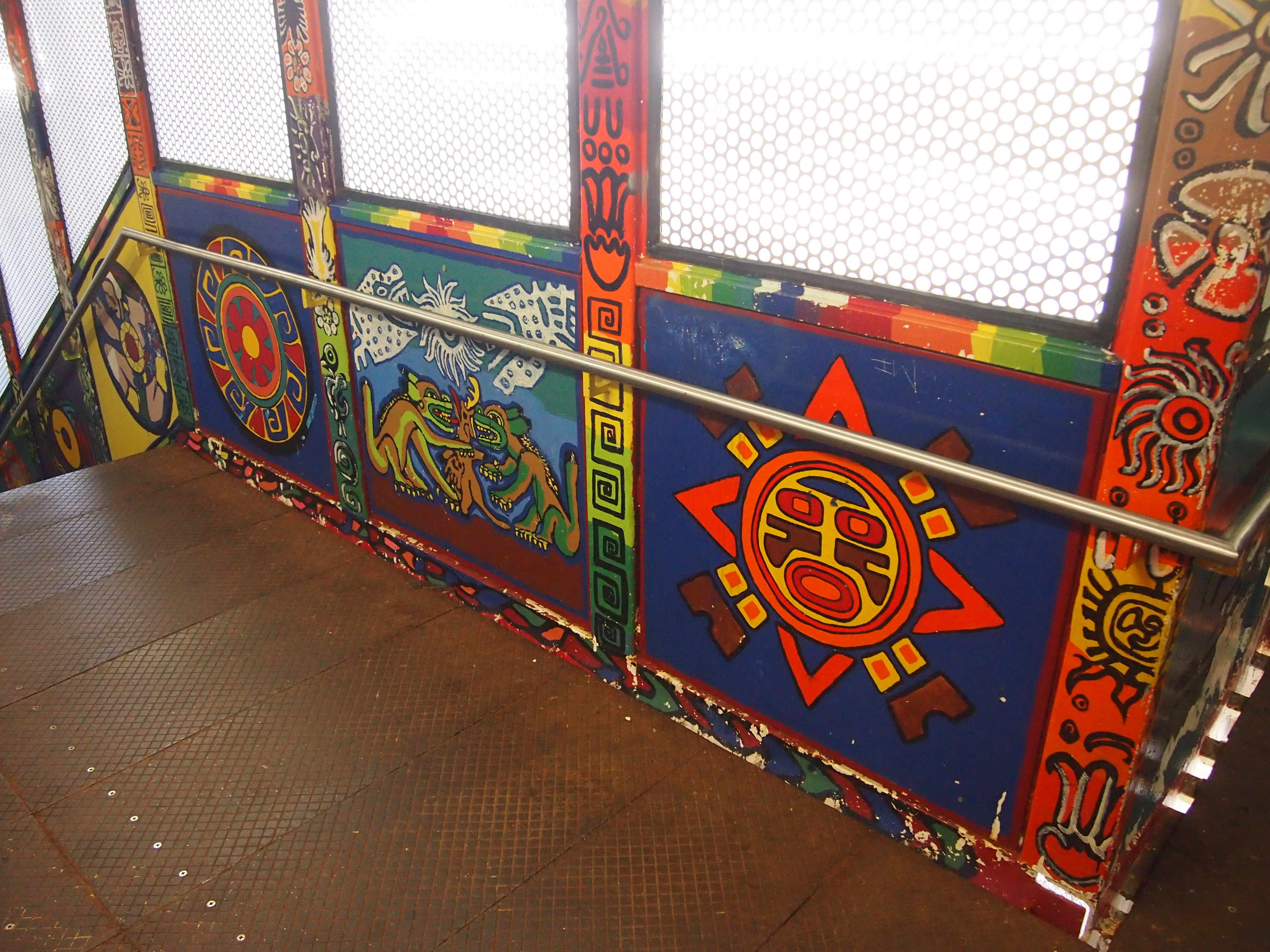
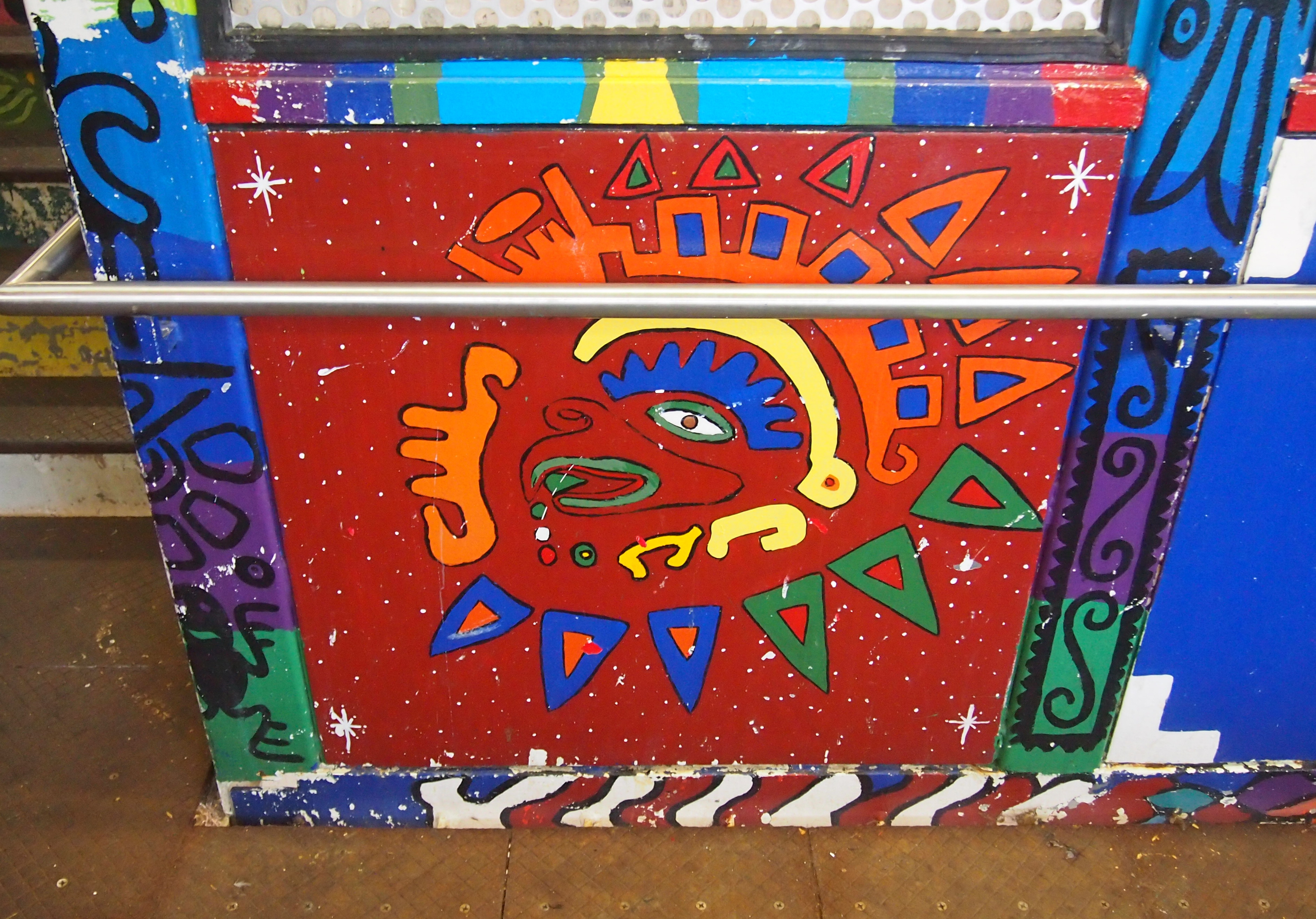 According to Chicago-l.org, which has detailed information about many aspects of Chicago’s elevated and subway system, the 18th Station “features two art installations contributed by members of the local Hispanic community, both installed under the auspices of the CTA’s Adopt-a-Station Program.”
According to Chicago-l.org, which has detailed information about many aspects of Chicago’s elevated and subway system, the 18th Station “features two art installations contributed by members of the local Hispanic community, both installed under the auspices of the CTA’s Adopt-a-Station Program.”
The first is a mosaic mural on the exterior of the station on the east side of the entrance, installed soon after the station opened in the early 1990s (the current station replaced a earlier one dating from the 1890s). I didn’t see that mural this time, since I headed westward to visit the museum.
In 1998, local artist Francisco Mendoza and the Mexican Fine Arts Center Museum (now the National Museum of Mexican Art), along with the city-run youth art program Gallery 37, created a second art installation at the station, notes Chicago-l.org. “Art teacher Mendoza enlisted his students at Gallery 18, a satellite program of Gallery 37, along with anyone else in the neighborhood who could paint to create colorful murals throughout the station.”
That’s what I saw. Since CTA platforms now feature screens that estimate the arrival time of the next train — a very handy use of information tech, I believe — I had time to wander around the station and take pictures. Such as of the painted stairwells.
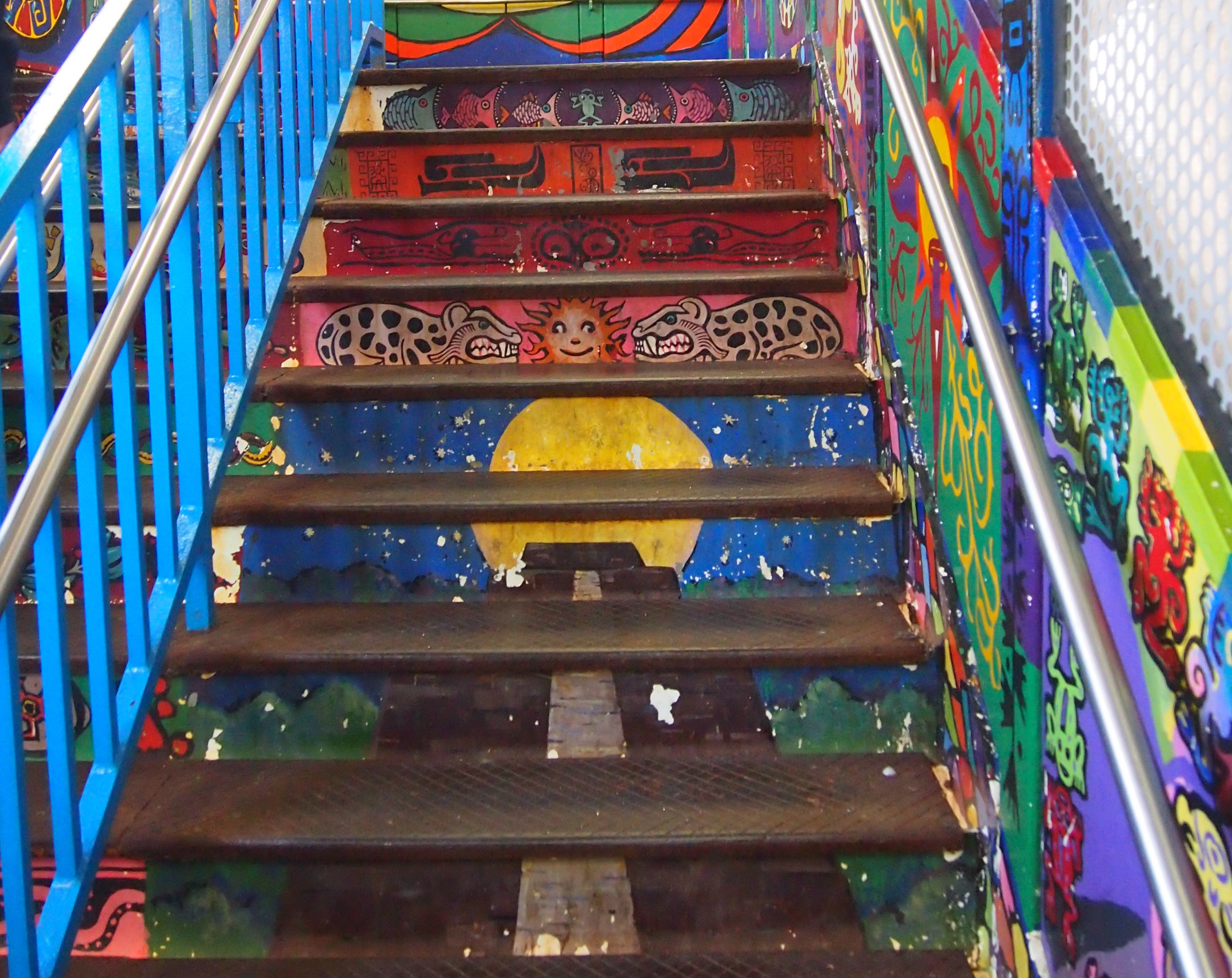
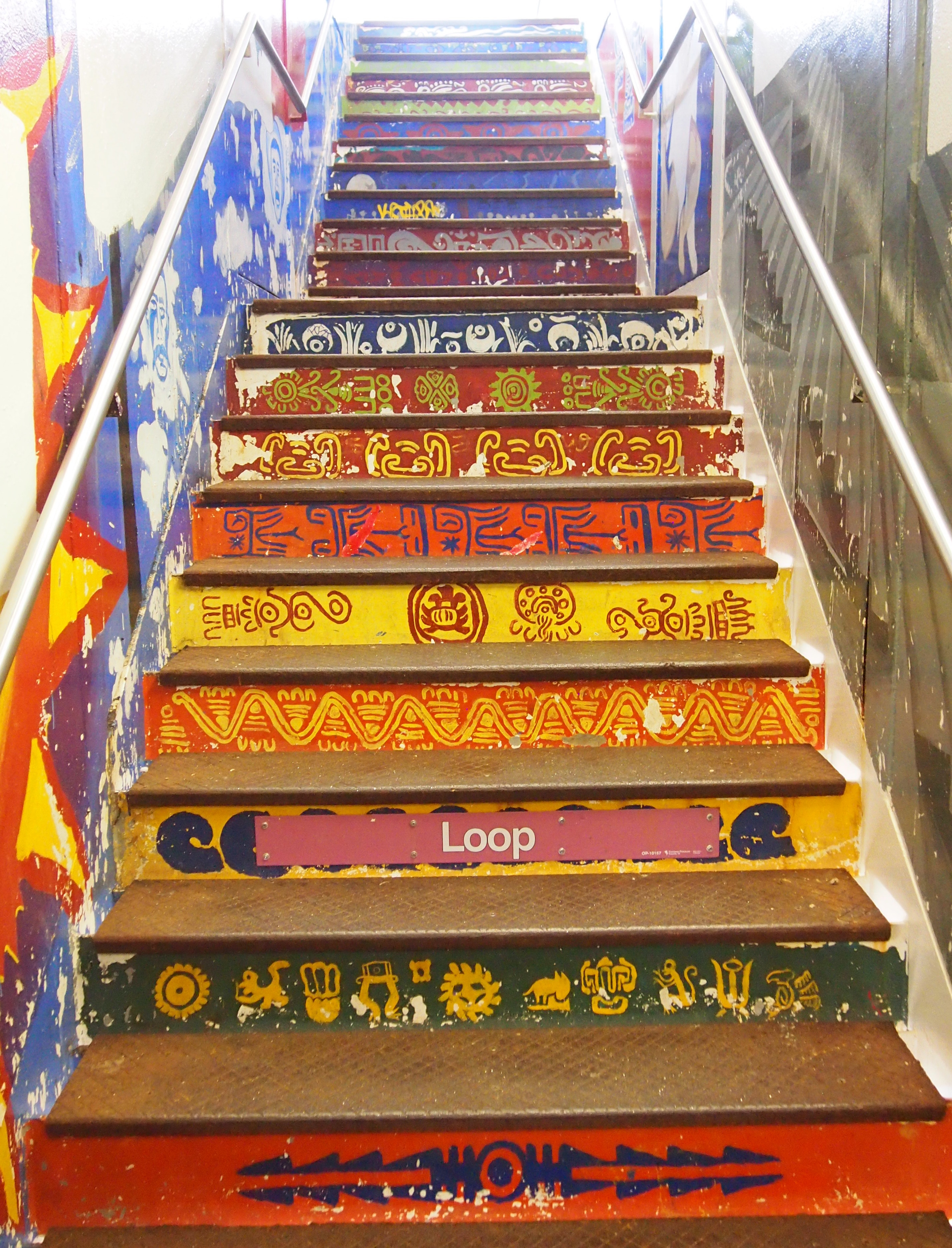 “Concentrated largely on the platforms and in the stairwells between the station house and platforms, the artwork covers any solid surfaces that could be utilized, including the lower panels on the side walls on the west platform and the full-height walls on the east platform under the platform canopy, and the walls, window and wall framing, and risers in the station stairwells.”
“Concentrated largely on the platforms and in the stairwells between the station house and platforms, the artwork covers any solid surfaces that could be utilized, including the lower panels on the side walls on the west platform and the full-height walls on the east platform under the platform canopy, and the walls, window and wall framing, and risers in the station stairwells.”
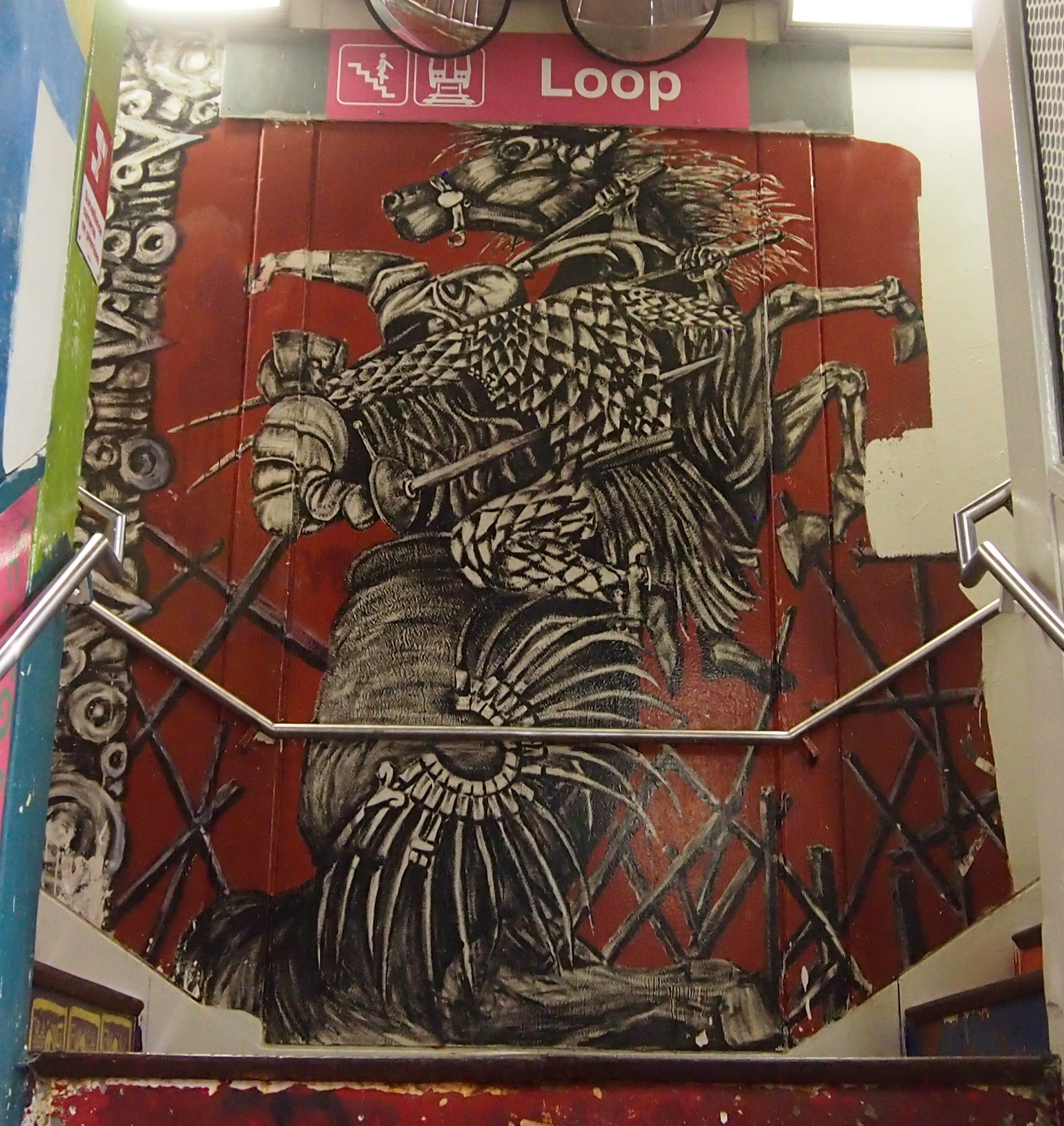
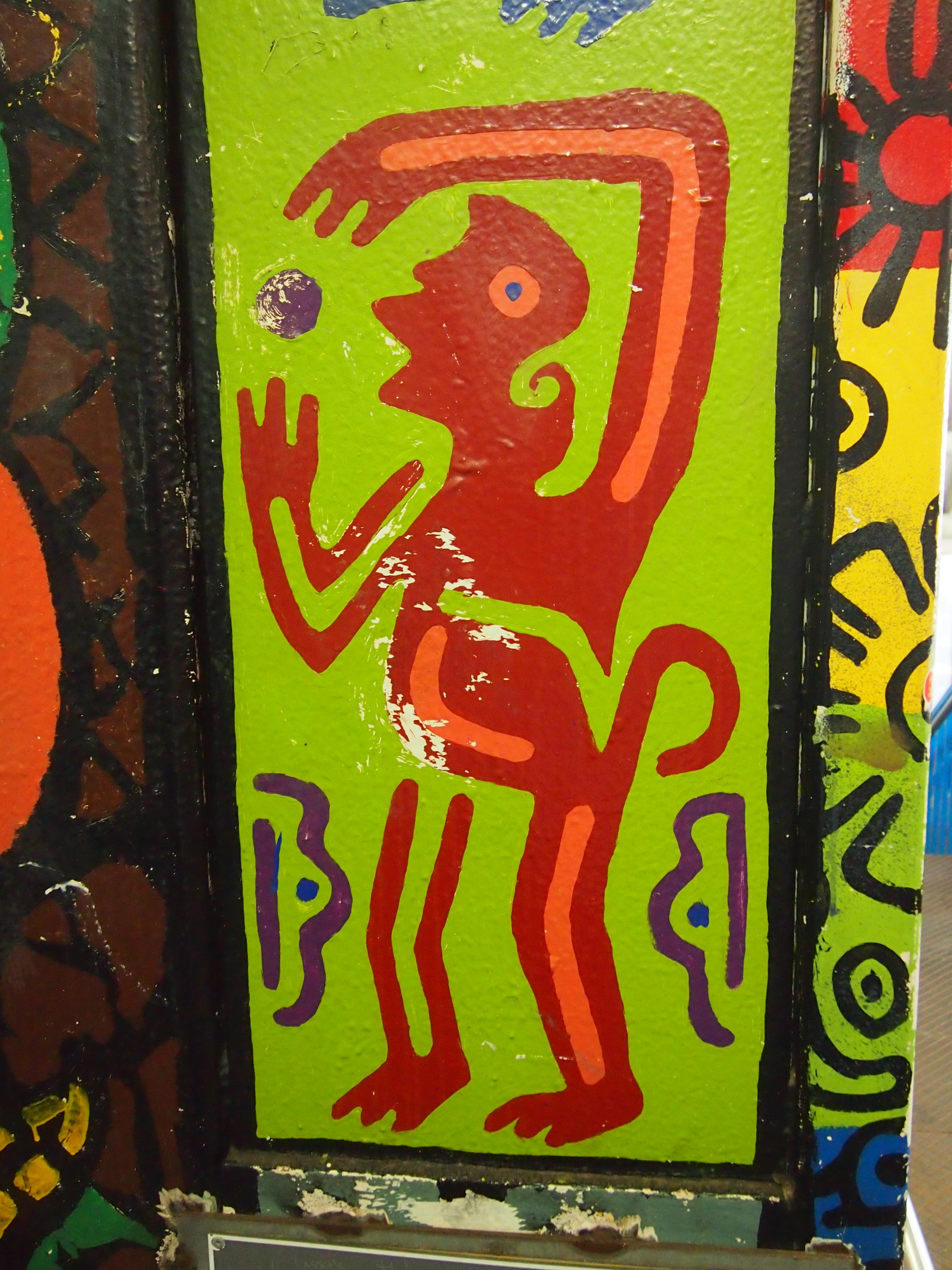 The station could look like an ordinary metal-and-concrete facility, but the painting makes it distinctive. It’s a good example of being someplace, rather than just anyplace.
The station could look like an ordinary metal-and-concrete facility, but the painting makes it distinctive. It’s a good example of being someplace, rather than just anyplace.